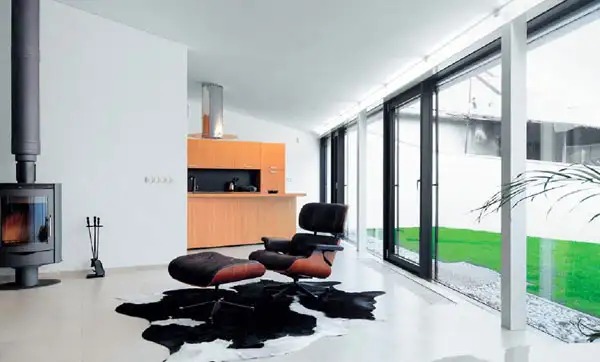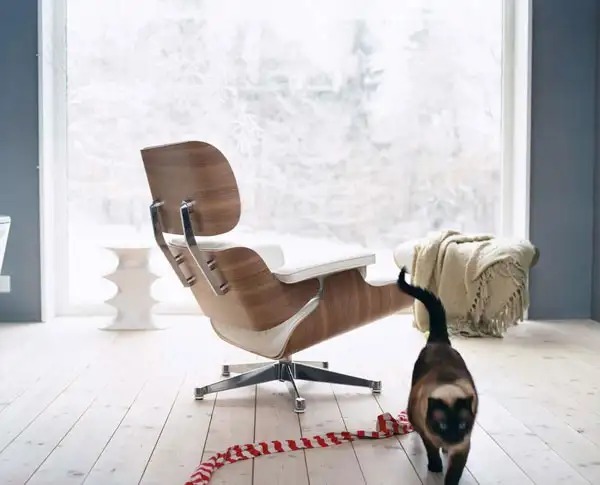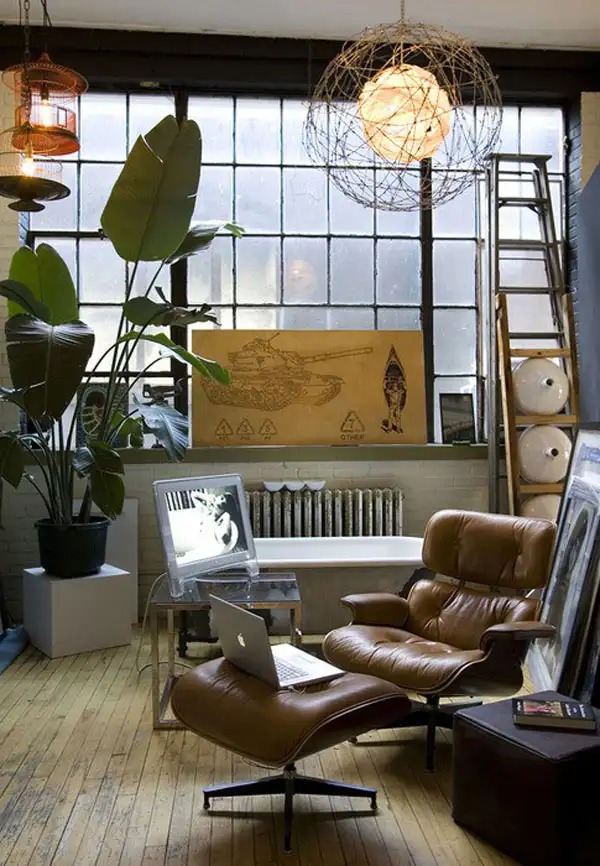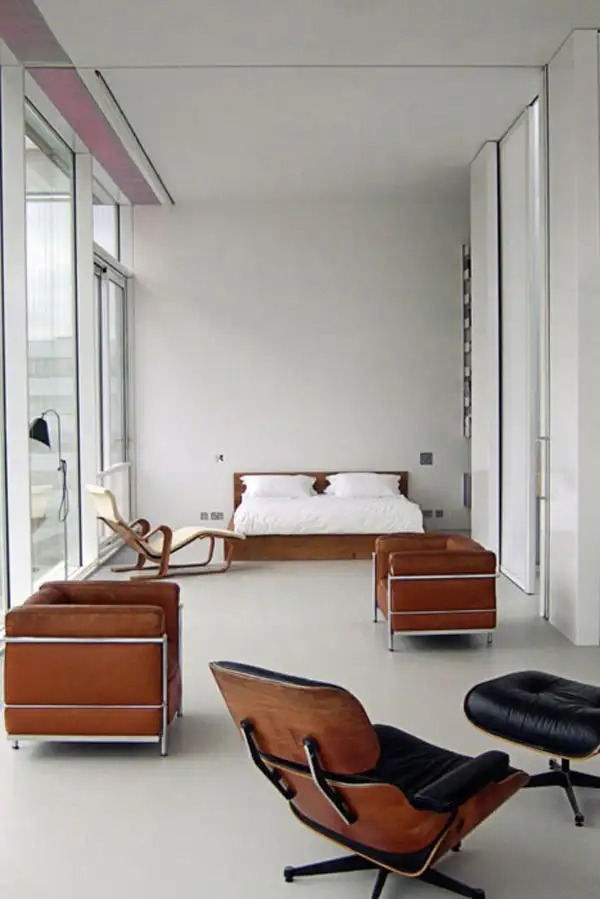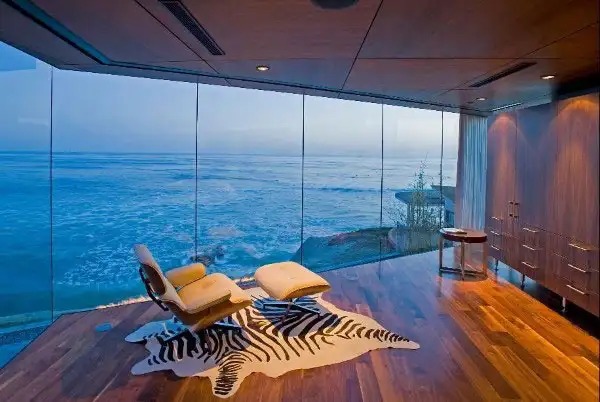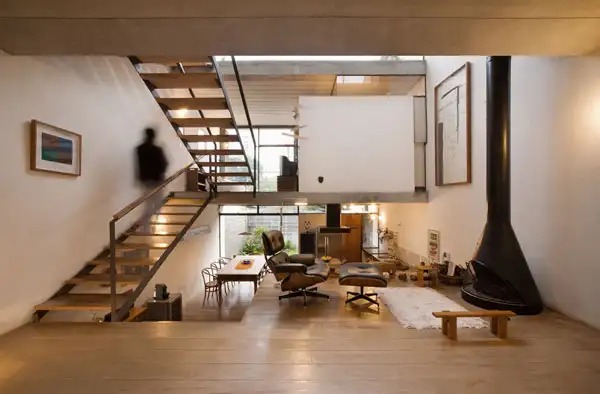
The Eames Lounge Chair and Ottoman, properly named the Eames Lounge (670) and Ottoman (671), were released in 1956 by designers Charles and Ray Eames . This was the first chair designed by Eames for the high-end market. These pieces of furniture are made of molded plywood and leather. Examples of these furniture are part of the permanent collection of the Museum of Modern Art in New York.
The chair is made of 3 curved plywood shells. In modern production the shells are made of seven thin layers of wood veneer glued together and formed under high temperature and pressure. The new set distinguishes the "original" (vintage) chair from the use of Brazilian rosewood veneers and the construction of the 5-ply plywood chair. The new set also distinguishes the earliest sets from the aluminum spurs, which first used solid wood panels in the earliest production models and then used hard plastic washers between rubber gaskets in later versions. In the earlier sets, the zipper around the cushion could be brown or black, and in the new set the zipper is black. The shells and cushions are essentially the same shape: composed of two interlocking curved forms that form a solid mass. The backrest and headrest are of the same proportions as the seat and footrest.
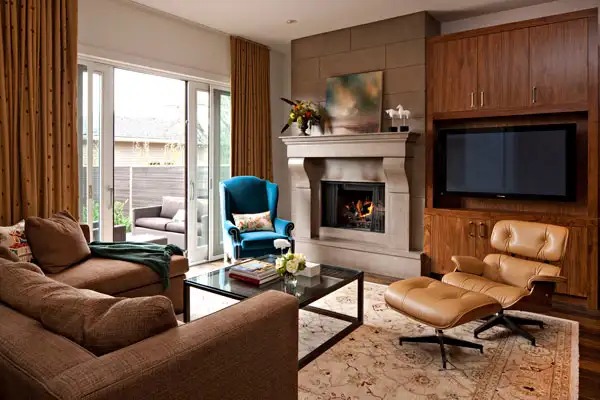
The Eameses continually made new uses of materials. The couple's first plywood chair, the Eames Lounge Wood (LCW), used a heavy rubber washer glued to the chair's backrest and screwed into the lumbar support. These washers, which have been dubbed "shockproof," allowed the backrest to flex slightly. This technology was brought back to the 670 Lounge Chair. The backrest and headrest are screwed together by a pair of aluminum supports. The unit is suspended from the seat by two attachment points at the armrests. The armrests screw to the inside of the shockproof backrest shell to the mounts, allowing the backrest and headrest to flex when the chair is in use. This is part of the chair's unusual design, as well as one of its biggest flaws. The rubber washers are firmly glued to the plywood shell, but have been known to tear free when subjected to excess weight, or when the rubber becomes old and brittle.
Creative Use of Other Materials for the Seat Cushions - Eschewing standard stapling or nailing upholstery. Instead, the cushions are sewn with zippers around the outer edges, where they are attached to a hard plastic base. The backing affixes the plywood shells with a series of hidden clips and rings. This design allows the shockproof screws or bolts hidden in the armrests to unmarred the chair's outer veneer. The chair has a lower seat which is permanently fixed in a reclining position. The cast aluminum base of the chair swivels the seat and threads so that the chair may be kept horizontally while sliding down.
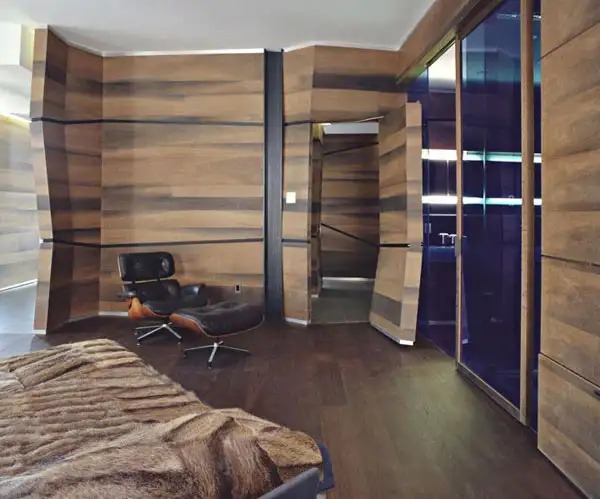
It first appeared on Arlene Francis' "Home" show aired on the NBC television network in the United States in 1956. The chair has become an iconic modern design, although when it was first introduced Charles Eames said in a letter that he looked at the chair as "comfortable and un-designy" (sic). Charles' vision was for a chair with "the warmth and receptive look of a well-used first baseman's mitt". Immediately following its debut Herman Miller launched an advertising campaign that emphasized the versatility of the chair. Print ads depicted a Victorian living room and 670 American Gothic-style houses with peas on the front porch occupied by a grandmother in a sunny field of hay. A significant ad was for Herman Eames Miller warning consumers against imitations and knockoffs.
Since its introduction, the Herman Miller chair has been continuously produced in the United States. Later, Vitra began producing the chair for the European market. Immediately following its release other furniture companies began copying the chair's design. Some copies were direct knockoffs, others were merely "influenced" of the design. The most significant company, Plycraft, now defunct, issued dozens of chairs that were direct imitations of or in the style of the Eames 670. More recently, other European companies have also begun to make direct copies of the Eames chair. However, Herman Miller and Vitra remain the only two companies that produce these chairs with the Eames name.
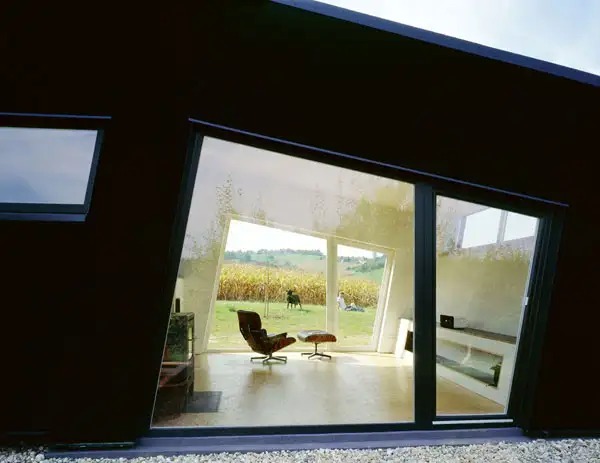
The Eames Lounge Chair appeals to people for several reasons. It's a classic design that has been in production continuously since its inception. In addition to style, it's also very comfortable, a combination not always found in designs. Also, some people find it desirable to consume it purely for conspicuous reasons, with the footrest retailing for around $3,200 or so in the U.S., depending on the choice of veneer and leather (recently offered by Herman Miller and Edelman, the leather adds significantly to the cost). In Europe, Vitra's version is considerably more expensive (around $9,000 for the classic rosewood/black leather version). Part of the chair's appeal comes from its comfort. Eames focused first and foremost on usability in his design.
